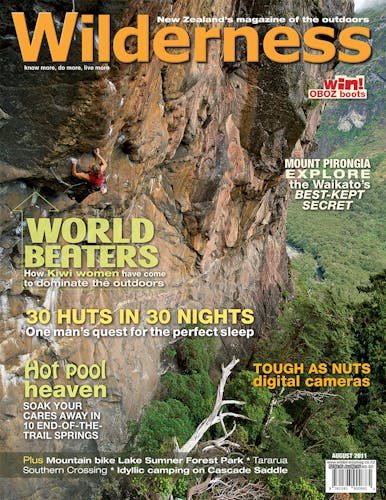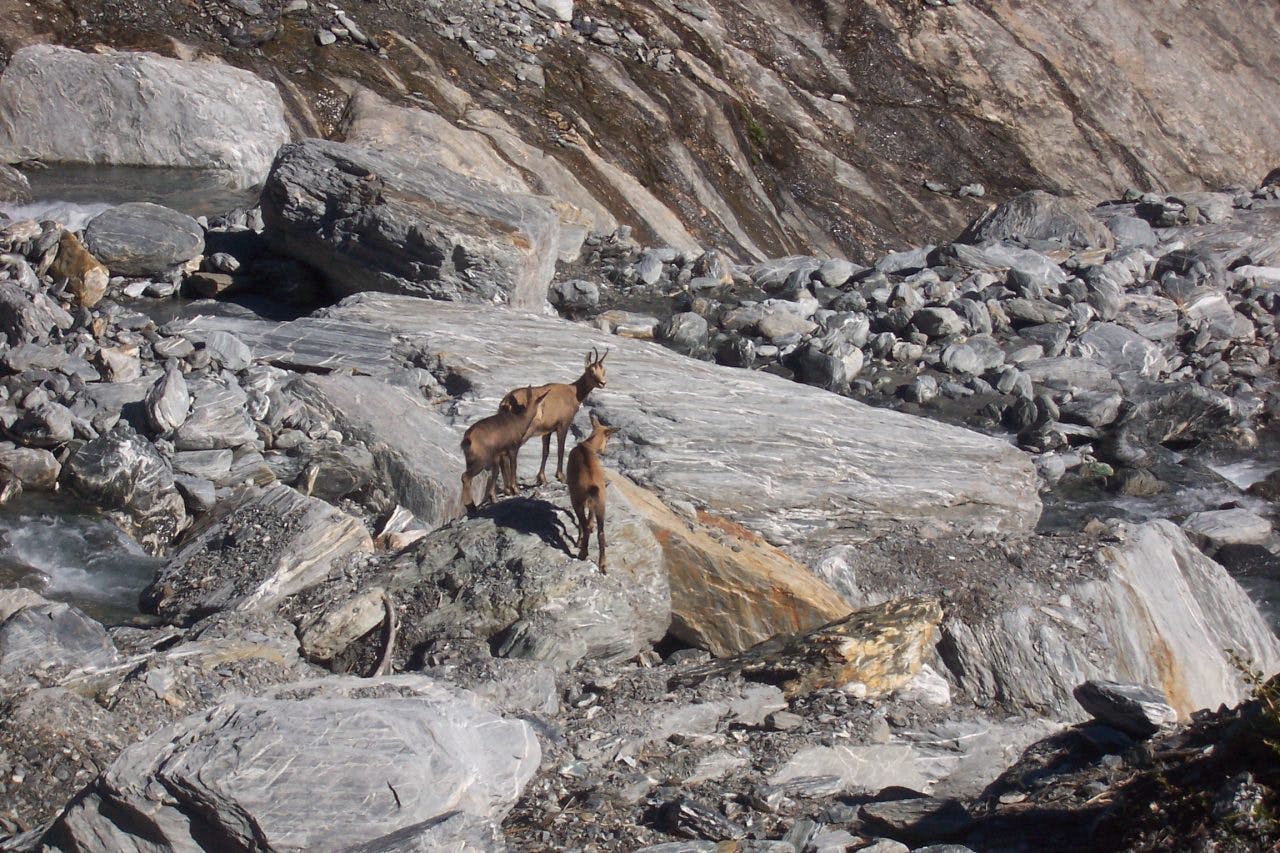Three places to spot the mountain goat of the Alps
One cold day in Arthur’s Pass, I was clambering up Dunns Creek and rounded a large boulder to find myself staring eyeball-to-eyeball with a surprised chamois. For a moment we stood staring at each other. But the chamois quickly regained its senses and with astonishing speed and agility ran off to disappear among the chaos of boulders and sub-alpine scrub. I can still vividly recall its dark eyes, curved horns and perfect, steaming breath.
Another time crossing Mt Pope, also in the Taipo Valley, I witnessed four chamois skittering across a steep scree slope as if it were a garden path. We were picking our way down the slope cautiously and the sure-footedness of these quadrupeds made a mockery of our vastly inferior balance and pace.
Chamois have two horns, and belong to the genus Rupicapra, part of the goat-antelope tribe. In their native European Alps, chamois have long been a prized trophy animal. In the early days of the 20th century, when acclimatisation societies were busy in their attempts to make New Zealand some sort of international game animal menagerie, chamois were introduced from Austria.
Politician Thomas Donne, a keen deerstalker, was personally responsible for the chamois liberation, along with tahr – the mountain goat of the Himalaya. He later boasted that ‘nature neglected New Zealand in providing game animals; man remedied the omission.’
After earlier attempts failed, the first successful liberation occurred at Mount Cook in 1907. The animals thrived and quickly spread along the length of the Southern Alps, perhaps the most rapid colonisation by any ungulate (hoofed animal) in New Zealand. Since the 1970s, they have also begun to occupy many parts of Fiordland, some of the central Otago ranges, the Paparoas and the
Nelson-Malborough mountains, although helicopter hunting has slowed their spread.
As a conservation-minded tramper I have mixed feelings about these creatures in our Alps. On one hand, they are graceful, superbly-adapted animals. Hunter Steuart Laing described them as ‘attractive animals at the end of an evolutionary process that combined beauty, toughness and independence of spirit’.
Hunters value them as a worthy game animal, and anyone with the skill and tenacity to stalk them gets my respect. The best meat comes from young animals or females, although even the haunches of a bull will become edible if stewed or slow cooked.
On the other hand, chamois undoubtedly impact negatively on our native alpine flora. Alpine herbs including buttercups, bristly carrots and daisies are particularly vulnerable to chamois browsing, but the animals also eat tussock and the leaves of woody plants. Natural history writer Gerard Hutching called the animals ‘an expanding menace’.
Chamois reach their northern extent in Nelson Lakes, the Kaikoura Ranges and Kahurangi National Park, where they have more recently spread.
West Coast
Suggesting where to see chamois is difficult, but the highest density of the animals occurs in the central West Coast Alps between the Karangarua and Wanganui rivers. Although primarily an animal of the sub-alpine zone, chamois do retreat to valleys during winter months when snow cover makes feeding difficult for them on higher slopes – or when they are out-competed by tahr. The Whataroa Valley is a well-known winter retreat for chamois, and I’ve seen dense patches of hoof marks in the river’s mid reaches, below Butler Junction. Likewise, chamois often retreat well into the forest in other central West Coast valleys including the Whitcombe.
Arthur’s Pass National Park
The mountains of Arthur’s Pass National Park don’t hold high numbers of chamois, but have the great advantage of accessibility. I’ve had most luck seeing them in the mountains above the Taipo Valley, but anywhere in the sub-alpine zone away from huts and tracks offers possibilities. Unlike their European counterparts, chamois don’t often form herds in New Zealand and are more likely observed in singles, or small groups. The bases of bluffs or overhangs are their favoured hangouts.
Nelson Lakes National Park
Chamois are curious creatures, a trait which leads some of them to their deaths when the object of their interest turns out to be a hunter. In Nelson Lakes, I’ve startled some and watched them disappear over the ridge, only to later poke their heads over the top to see what I was.
Probably the less-frequented parts of the park offer the highest chance of spotting chamois: the tops around Nardoo Biv, Thompson Pass and the peaks of the Mahanga and Ella ranges. Alternatively, Cupola Hut on the Travers Range was originally built as a research base during the 1960s from which scientists studied deer and chamois, and provides a worthy destination to see these animals.
As hunters well know, you need patience and skill to maximise your chance of spying a chamois. Having said that, tramp enough in the Southern Alps and you’re bound to bump into one through pure blind luck.








